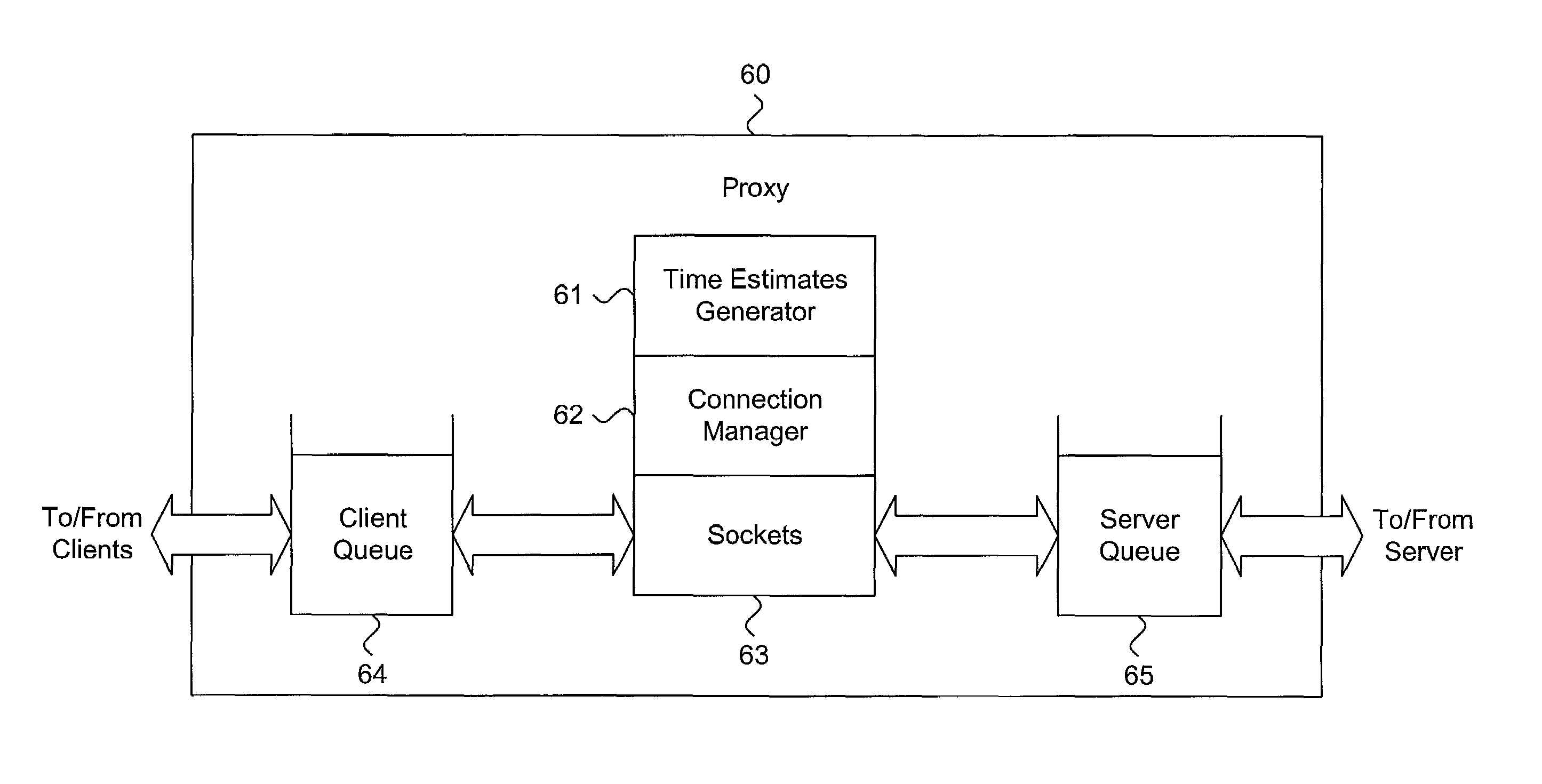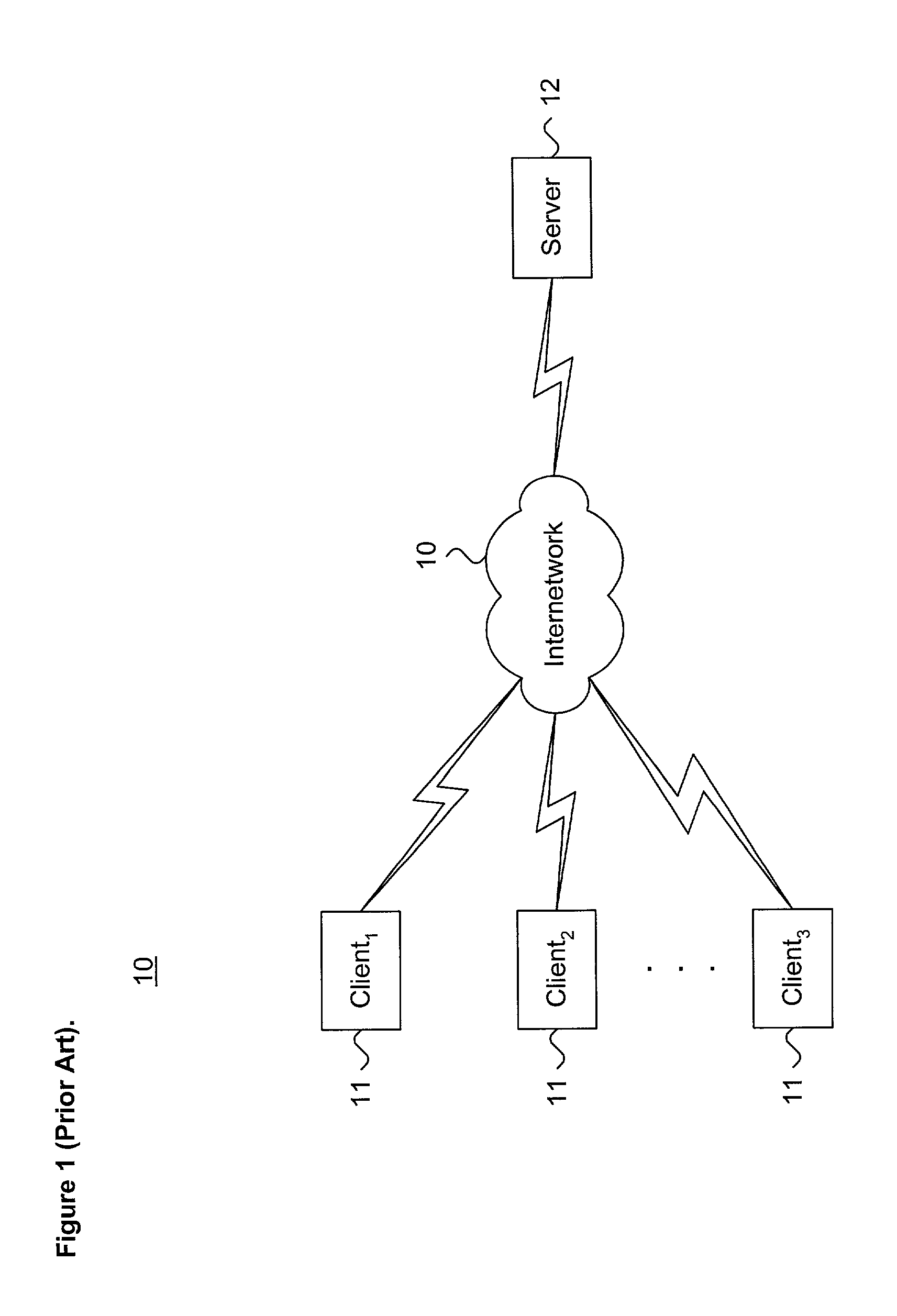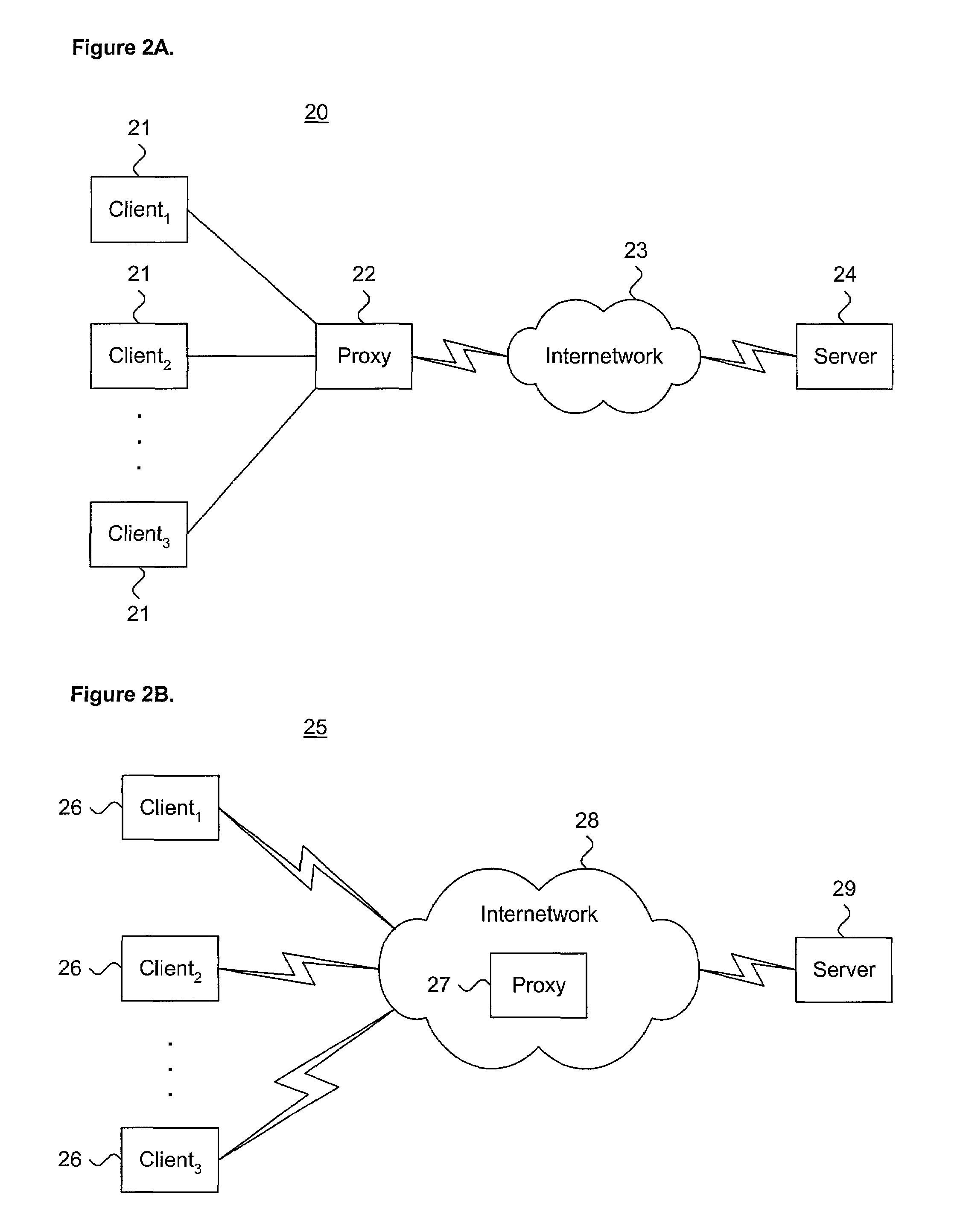System and method for efficiently forwarding client requests from a proxy server in a TCP/IP computing environment
a proxy server and computing environment technology, applied in the field of proxy services, can solve the problems of inefficient proxy-origin server connection management, proxies are relegated to the same proxies, content cannot be cached in proxies, etc., and achieve the effect of reducing network overhead, and reducing the number of proxies
- Summary
- Abstract
- Description
- Claims
- Application Information
AI Technical Summary
Benefits of technology
Problems solved by technology
Method used
Image
Examples
Embodiment Construction
[0025]FIG. 1 is a network diagram showing a prior art system for processing requests in a distributed computing environment 10. A set of clients 11 are remotely connected to a common server 12 via a network connection, such as an intranetwork or internetwork 13, including the Internet. During communication sessions, the clients 11 send requests bound for the common server 12 and receive content served re-utilization. The individual requests are arbitrarily generated and routed to the common server 12. However, the common server 12 has finite resources. During request heavy loads, the common server 12 is inundated with requests and can become saturated. In turn, the infrastructure supporting the common server 12 also becomes saturated and provides poor response times.
[0026]One solution to alleviating server and infrastructure traffic load is to position proxy servers (proxies) at some point intermediate to the request-generating clients and the response-serving servers. FIGS. 2A–2C a...
PUM
 Login to View More
Login to View More Abstract
Description
Claims
Application Information
 Login to View More
Login to View More - R&D
- Intellectual Property
- Life Sciences
- Materials
- Tech Scout
- Unparalleled Data Quality
- Higher Quality Content
- 60% Fewer Hallucinations
Browse by: Latest US Patents, China's latest patents, Technical Efficacy Thesaurus, Application Domain, Technology Topic, Popular Technical Reports.
© 2025 PatSnap. All rights reserved.Legal|Privacy policy|Modern Slavery Act Transparency Statement|Sitemap|About US| Contact US: help@patsnap.com



